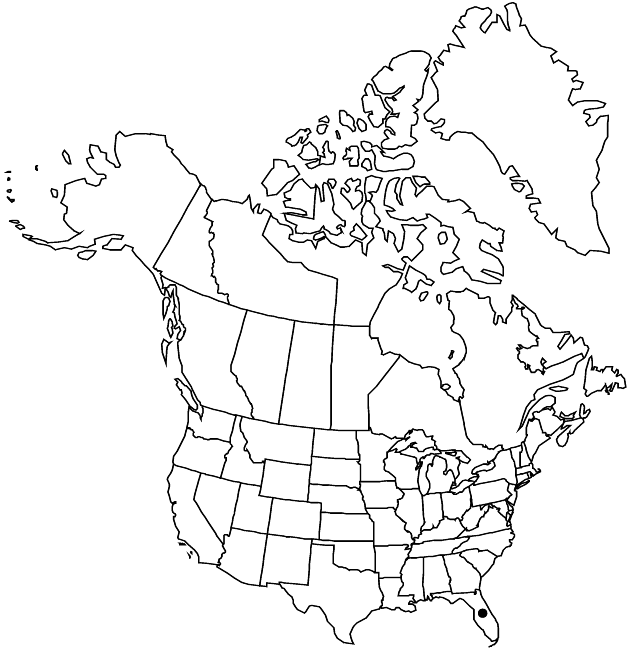familyAsteraceae
genusSolidago
sectionSolidago sect. Solidago
subsectionSolidago subsect. Venosae
speciesSolidago odora
subspeciesSolidago odora subsp. chapmanii
Solidago odora subsp. chapmanii
Sida 20: 1611. 2003.
Common names: Chapman’s goldenrod
Endemic
Basionym: Solidago chapmanii A. Gray Proc. Amer. Acad. Arts 16: 80. 1880
Synonyms: Solidago odora var. chapmanii (A. Gray) Cronquist
Stems uniformly puberulent, sometimes with short glabrous-glabrate strips proximal to leaf-bases. Mid cauline leaves mostly (15–) 30–70 × 8–20 mm (2–6 times as long as wide). 2n = 18.
Phenology: Flowering Sep–Oct.
Habitat: Sandy soils, margins of woods, open pine and oak woods
Elevation: 10–50 m
Discussion
Subspecies chapmanii is found mostly in peninsular Florida, seldom in the eastern panhandle. Its leaves are sometimes similar in shape to those of Solidago fistulosa, both being more ovate than in typical subsp. odora.
Selected References
None.
Lower Taxa
None.
"thin" is not a number.
... more about "Solidago odora subsp. chapmanii"
introrse +
connate +
distinct +
herbaceous +
acute +
scarious +
hirsute +
papillate +
paniculiform +
cone--shaped +
continuous +
not 3-nerved +
withering +
not persisting +
rounded +
winged +
entire +
flowering +
lanceolate;linear-lanceolate or narrowly ovate +
reduced +
ribbed +
linear-lanceolate +
secund +
recurved;ascending;spreading +
proximalmost +
elongate +
stigmatic +
barbellate +
longer +
persistent +
25;45 +
absent +
woody +
Chapman’s goldenrod +
absent +
ampliate +
monomorphic +
dimorphic +
1.4mm;2.3mm +
staminate +
Fla. +
straight +
3-nerved +
resinous +
translucent gland-dotted +
mid +
distal +
distinct +
proximal +
1;5 +
bisexual +
dispersed +
secund +
discoid +
singly +
indeterminate +
75;350 +
pyramidal +
clavate +
surrounding +
campanulate +
1.4mm;2.5mm +
0.4mm;0.9mm +
pronounced +
3-nerved +
alternate +
basal +
distal +
proximal +
erect;spreading +
? (?) +
winged +
flowering +
scarious +
attenuate +
translucent +
scabroso-strigillose +
prominent +
setiform +
2-carpellate +
inferior +
attached +
anatropous +
persistent +
tough +
thick +
absent +
connate +
winged +
not persisting +
proximal +
short-strigillose +
eglandular +
resinous +
yellowish +
not striate +
persistent +
distinct +
falling +
glabrous +
acute +
unequal +
3-nerved +
ovate-oblanceolate +
arching +
flowering +
largest +
flowering +
Sida +
2003 +
pistillate +
absent +
fertile +
epaleate +
pitted +
convex +
woody +
fibrous +
exalbuminous +
modifed +
3;4 +
Endemic +
alternate +
branched +
puberulent +
proximal +
glabrous-glabrate +
triangular +
2-branched +
glabrous +
Solidago odora subsp. chapmanii +
Solidago odora +
subspecies +
shorter +
not persisting +
sessile +
perennial +
cauline +
